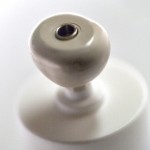Implant surgery and restoration involve complex dental procedures. Appropriate and adequate training in proper technique is strongly recommended prior to implant use. Improper technique can result in implant failure, loss of supportive bone, or both.
Excessive mobility, bone loss, or infection may indicate the implant is failing. Any implant which appears to be failing should be treated or removed as soon as possible. If removal is necessary, curette any soft tissue from the implant site and allow site to heal as though it were an atraumatic extraction.
Overload is one of the key contributors to implant failure, particularly in the molar region where occlusal loads are typically the highest. Ensure the implant size is appropriate for the occlusal load.
Potential excessive loading conditions may include: inadequate number of implants; inadequate implant length, diameter, or both; excessive cantilever length; incomplete abutment seating; occlusal interferences causing excessive lateral forces; patient parafunctions such as bruxing; improper dental laboratory casting procedures; inadequate prosthesis fit; and trauma from patient habits and accidents.
Precautions
Single-use only; do not reprocess
Contour Healer temporary abutments are provided non-sterile: autoclave before use [see below]
Do not dry-heat sterilize Contour Healer Temporary Abutments
Instruct the patient to see a trained dental professional immediately if any of the following
occur:
- Looseness of the prosthesis
- Infection or exudate around the implant
- Pain or any other unusual symptom that the patient has not been told to expect.
- To minimize heat generation during intraoral preparation, intermittent cutting (approximately 15 seconds in duration) under copious irrigation is recommended.
- Do not over-tighten the screw. Over-tightening could strip the threads or break the implant.
- Appropriate tightening of the screw is essential to prevent premature loosening. The retaining screw should be hand-tightened only, using the corresponding drivers to match the implant system being used.



